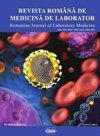Associations of serum vitamin D and Fok I polymorphism of receptor gene with unexplained recurrent spontaneous abortion
IF 0.5
4区 医学
Q4 MEDICINE, RESEARCH & EXPERIMENTAL
引用次数: 0
Abstract
Abstract Background: To investigate the associations of serum vitamin D and Fok I polymorphism of its receptor (VDR) with unexplained recurrent spontaneous abortion (URSA). Methods: Ninety URSA patients and another 104 healthy pregnant women were selected as URSA and control groups, respectively. 25-Hydroxyvitamin D [25-(OH)D] level was detected by chemiluminescence. VDR gene Fok I polymorphism was analyzed by PCR, and the distribution of genotype frequency was calculated by Hardy-Weinberg equilibrium test. Association between Fok I polymorphism and susceptibility to URSA was investigated by logistic regression analysis. Results: Gestational age, uterine height, waist circumference, 25-(OH)D level and proportions of Fok I FF and Ff genotypes were significantly lower in the URSA group (P<0.05). Compared with ff genotype, risk of URSA reduced for Ff and FF genotypes. Compared with allele f, risk of URSA was lower for allele F. 25-(OH)D level of ff genotype was significantly lower in the URSA group, which was lower than that of FF genotype (P<0.05). Compared with women with 25-(OH)D level >30 ng/mL and F allele (FF+Ff), the risk of URSA increased 2.45-, 2.43- and 5.34-fold for those with 25-(OH)D level >30 ng/mL and ff genotype, with 25-(OH)D level ≤30 ng/mL, and with ff genotype and 25-(OH)D level ≤30 ng/mL, respectively. Conclusions: The 25-(OH)D level of the URSA group was significantly lower than that of normal pregnant women. Probably, VDR gene Fok I polymorphism is associated with URSA occurrence, and allele F decreases the risk. The risk of URSA dramatically increases in women with ff genotype and 25-(OH)D deficiency.血清维生素D和受体基因Fok I多态性与不明原因复发性自然流产的关系
摘要背景:探讨血清维生素D及其受体Fok I多态性(VDR)与不明原因复发性自然流产(URSA)的关系。方法:将90例URSA患者和104例健康孕妇分别作为URSA组和对照组。化学发光法检测25-羟基维生素D [25-(OH)D]水平。采用PCR分析VDR基因Fok I多态性,采用Hardy-Weinberg平衡检验计算基因型频率分布。采用logistic回归分析探讨Fok I多态性与URSA易感性的关系。结果:URSA组(P30 ng/mL和F等位基因(FF+ FF))胎龄、子宫高度、腰围、25-(OH)D水平及Fok I FF和FF基因型比例显著降低,25-(OH)D水平>30 ng/mL和FF基因型、25-(OH)D水平≤30 ng/mL、FF基因型和25-(OH)D水平≤30 ng/mL、FF基因型和25-(OH)D水平≤30 ng/mL的URSA风险分别增加2.45倍、2.43倍和5.34倍。结论:URSA组25-(OH)D水平明显低于正常孕妇。可能VDR基因Fok I多态性与URSA的发生有关,而等位基因F降低了URSA的发生风险。ff基因型和25-(OH)D缺乏症的妇女患URSA的风险显著增加。
本文章由计算机程序翻译,如有差异,请以英文原文为准。
求助全文
约1分钟内获得全文
求助全文
来源期刊

Revista Romana De Medicina De Laborator
MEDICINE, RESEARCH & EXPERIMENTAL-
CiteScore
0.31
自引率
20.00%
发文量
43
审稿时长
>12 weeks
期刊介绍:
The aim of the journal is to publish new information that would lead to a better understanding of biological mechanisms of production of human diseases, their prevention and diagnosis as early as possible and to monitor therapy and the development of the health of patients
 求助内容:
求助内容: 应助结果提醒方式:
应助结果提醒方式:


